New(s) College
Spring 2023
In January 2023, the New College of Florida underwent a hostile takeover by Governor Ron DeSantis.
Their goal: to transform the small, liberal institution of New College into a conservative college and solidify DeSantis's political position as a candidate at the forefront of the anti-woke movement.

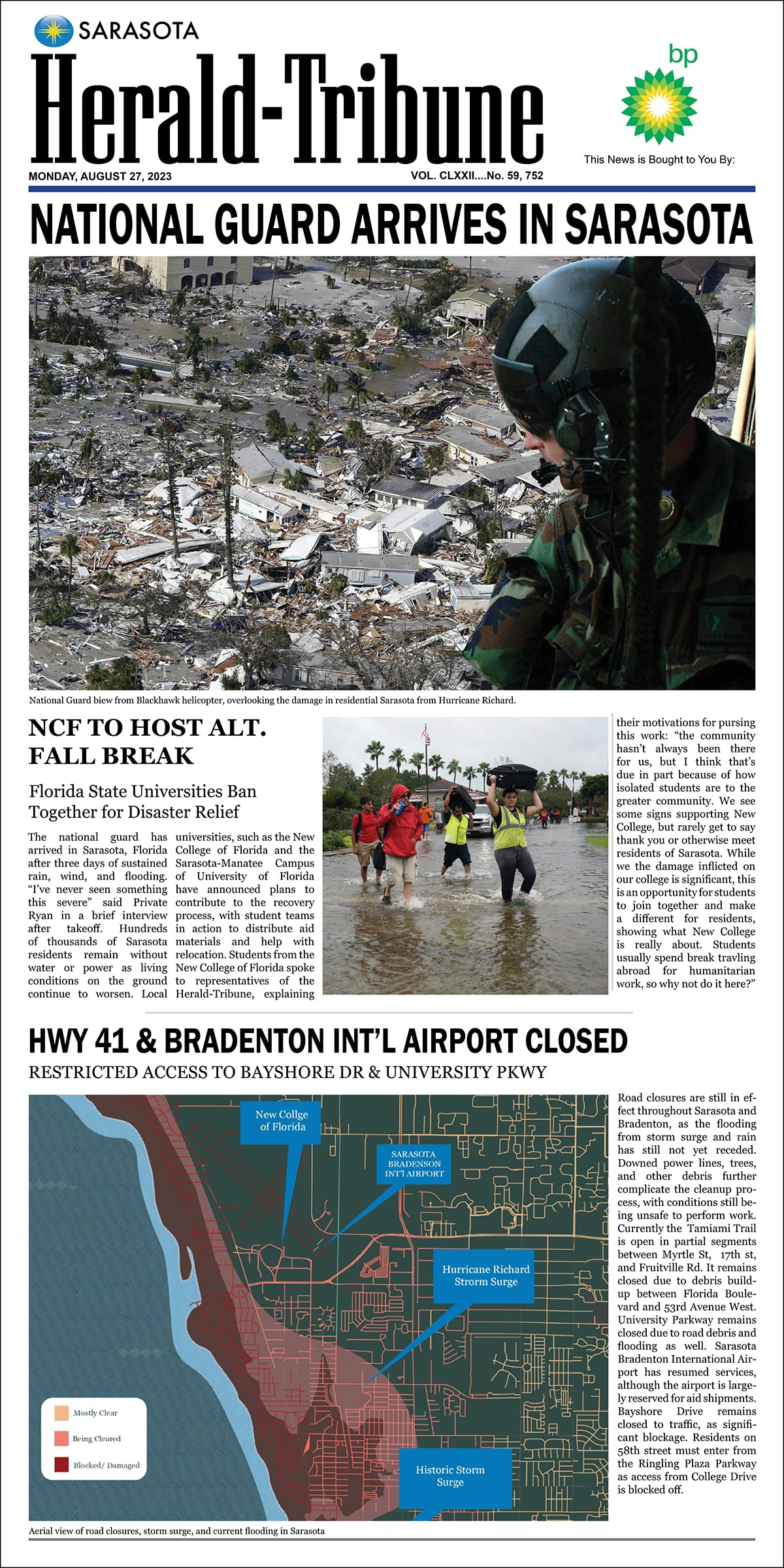
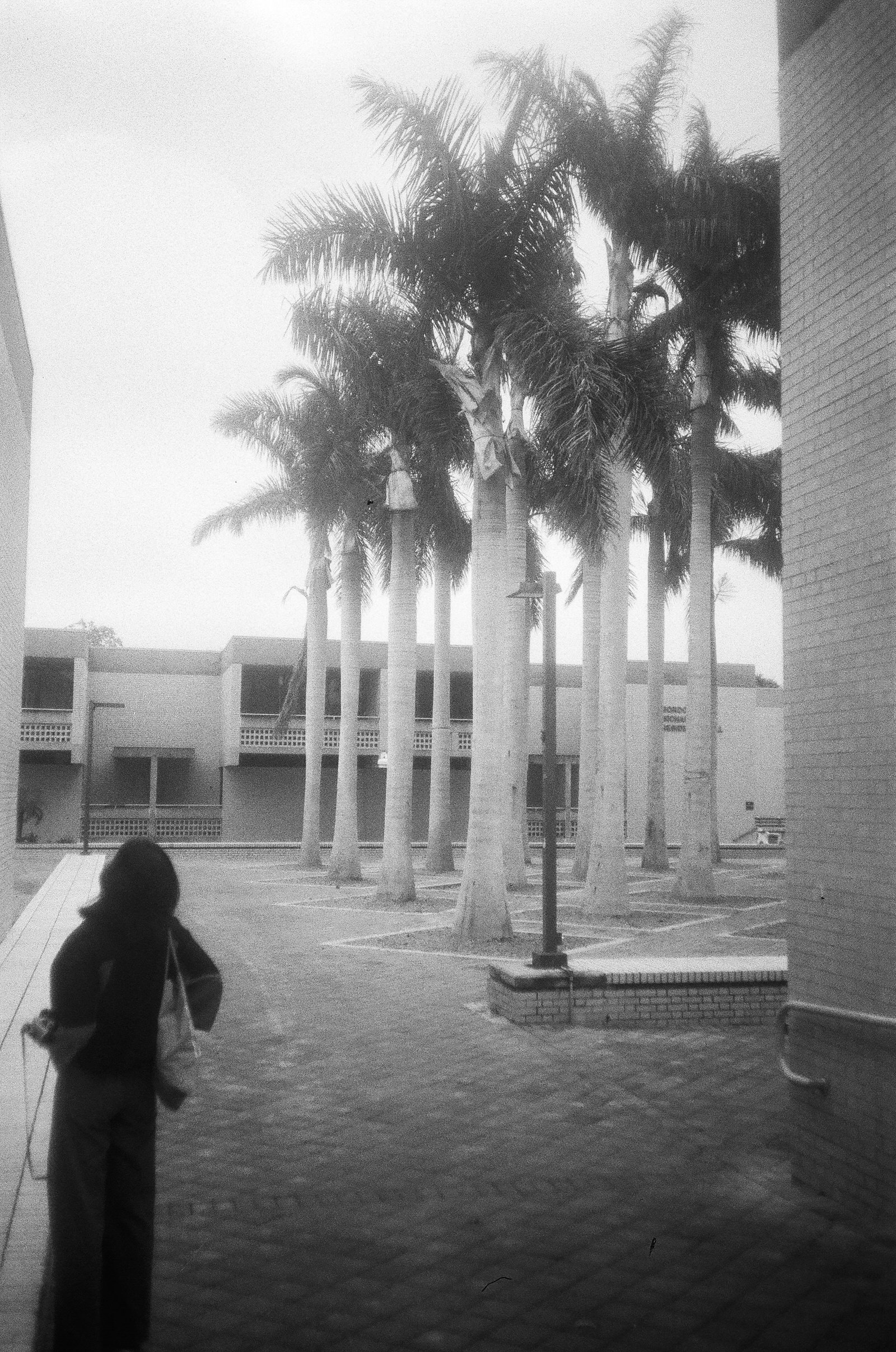
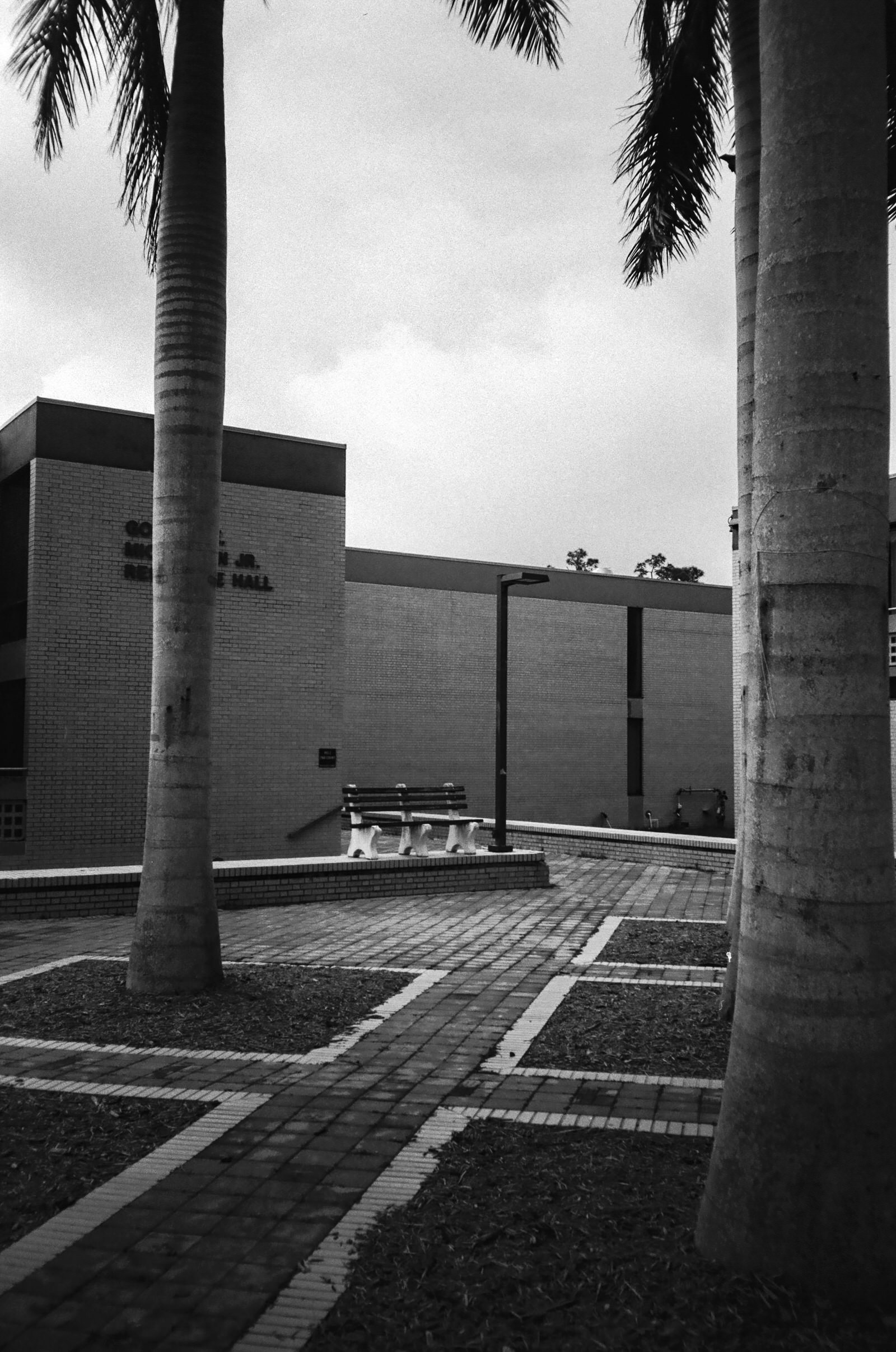
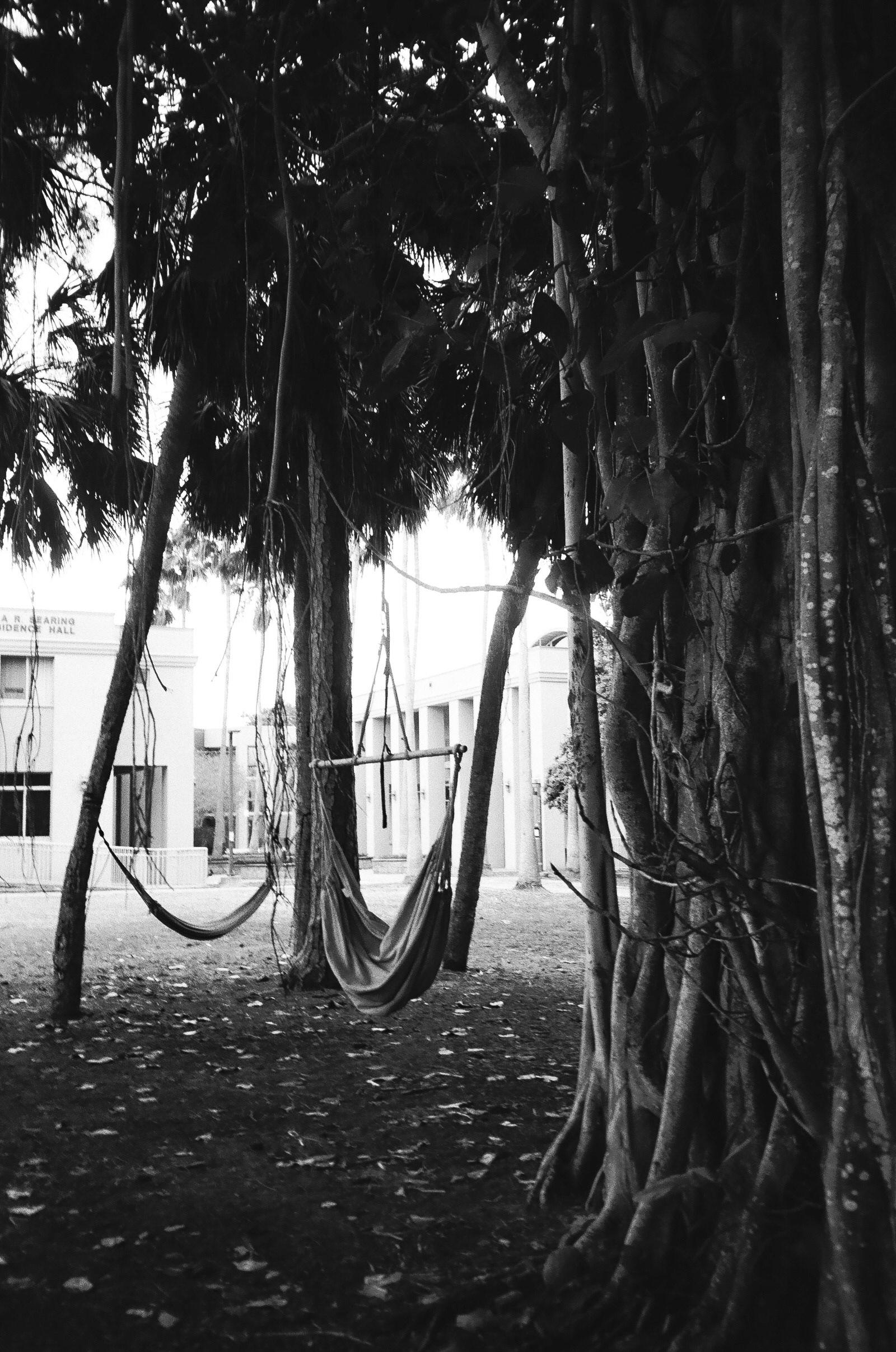
As part of the New College Challenge hosted by the New College of Florida under the direction of former-president Okker, select universities were invited to propose solutions that could improve New College's environmental, social, and economic resilience. While my classmates chose to focus on environmental resilience and economic partnerships, my studio partner (Miranda Clark) and I chose to focus on the political and cultural climate of the campus.
Throughout the duration of the studio, news outlets reported on the student protests, professors resigning, and the deteriorating state of mental health on the college campus. We chose to engage with this dynamic situation, imagining how social resilience, forms of protest, and tactical urbanism might help preserve the essence of New College.
After all, what does it mean to "save" an institution if the students that define its character are displaced?
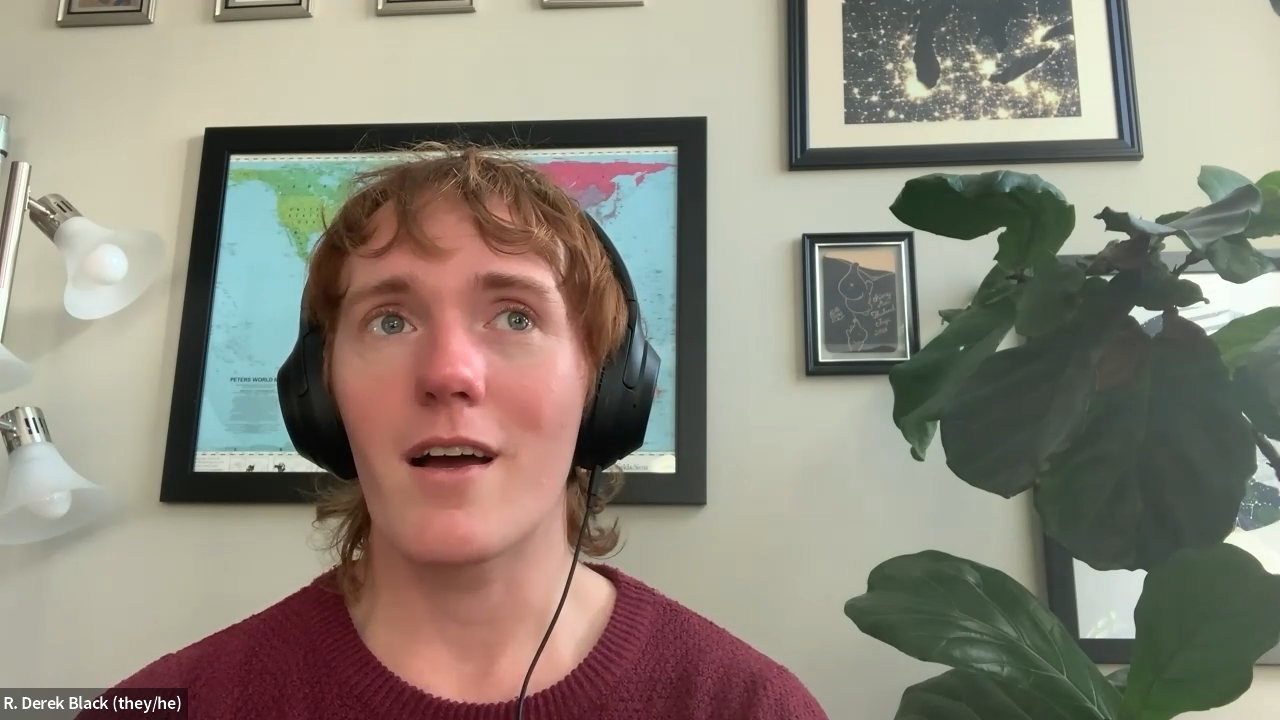
To better understand New College's cultural environment, I arranged interviews with prominent alumni such as Derek Black (the godson of David Duke and former white supremacist-turned-activist), current students, professors, and facilities managers.
Through these interviews we learned about campus challenges with physical infrastructure and deferred maintenance and the administration's decision to de-fund student organizations. Combined with in-depth research of student publications and social-media posts, we built up a profile of New College's challenges, nature, and core experiences.
Inspired by Sarasota's history as the home of the Ringling Brothers and PT Barnum's Circus, we created a board-game titled: "There's a New Circus in Town." Players could pick character cards representing key figures that sought to protect or destabilize the current campus environment, and action cards captured unique instances that affected the well-being of students on campus.
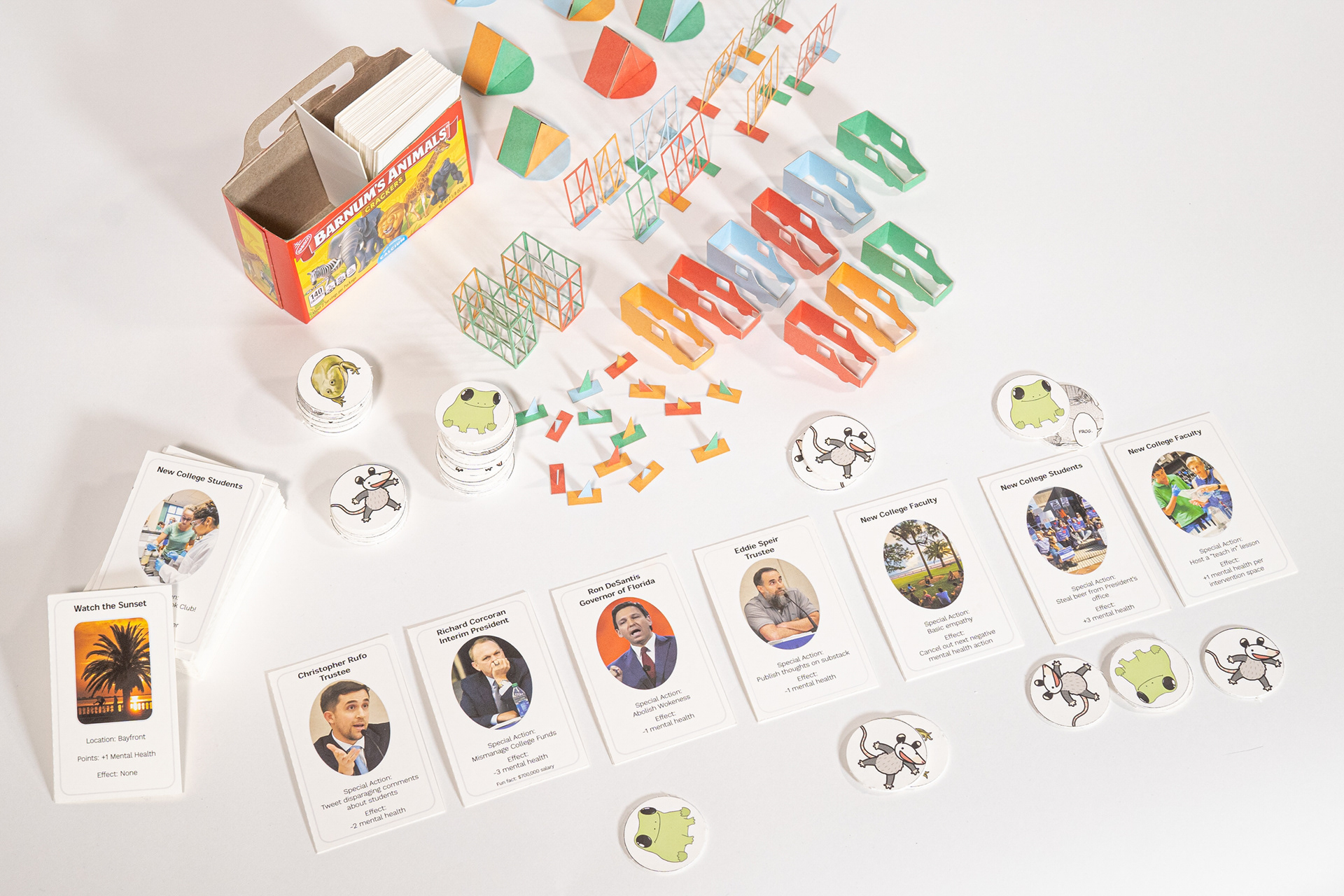
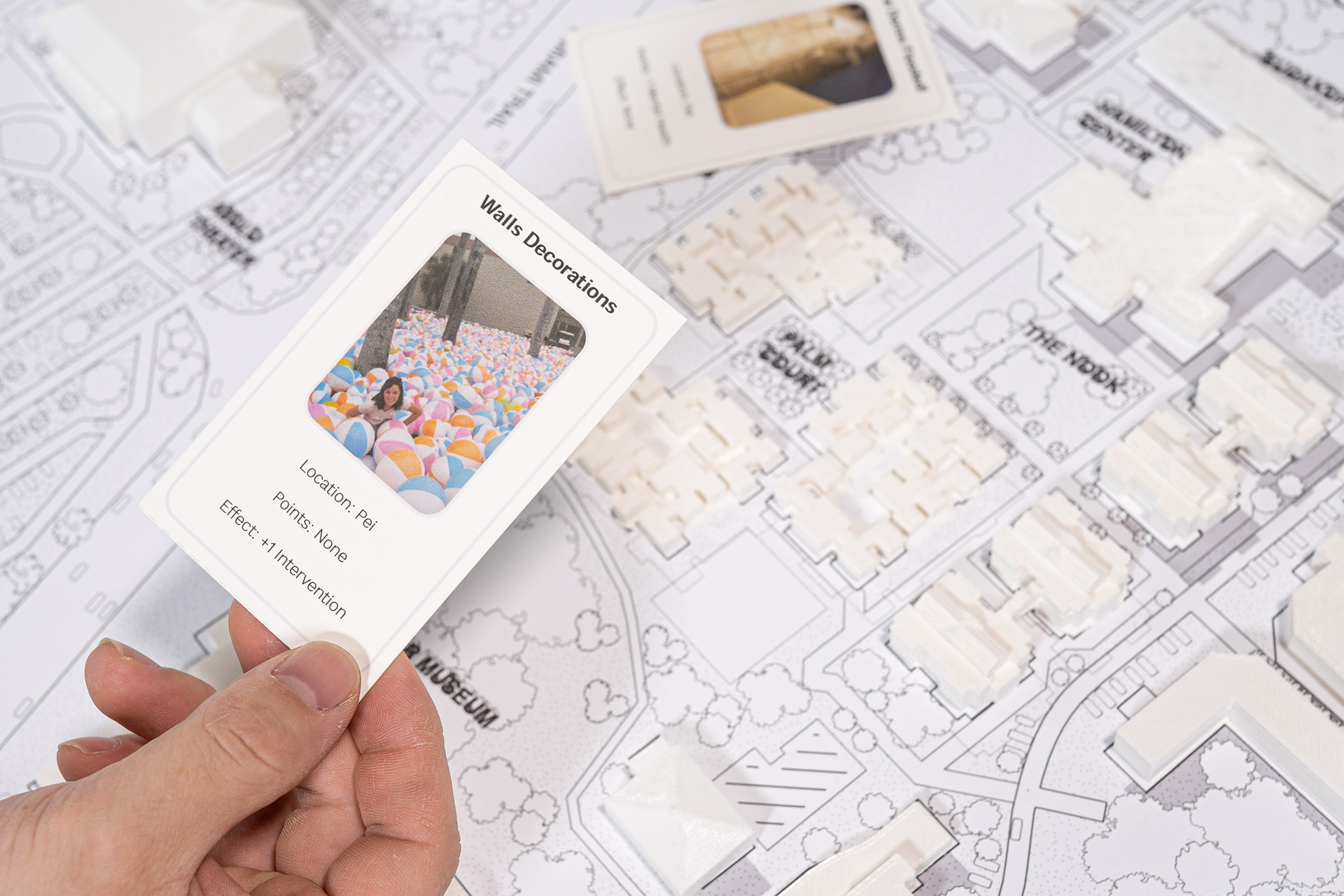
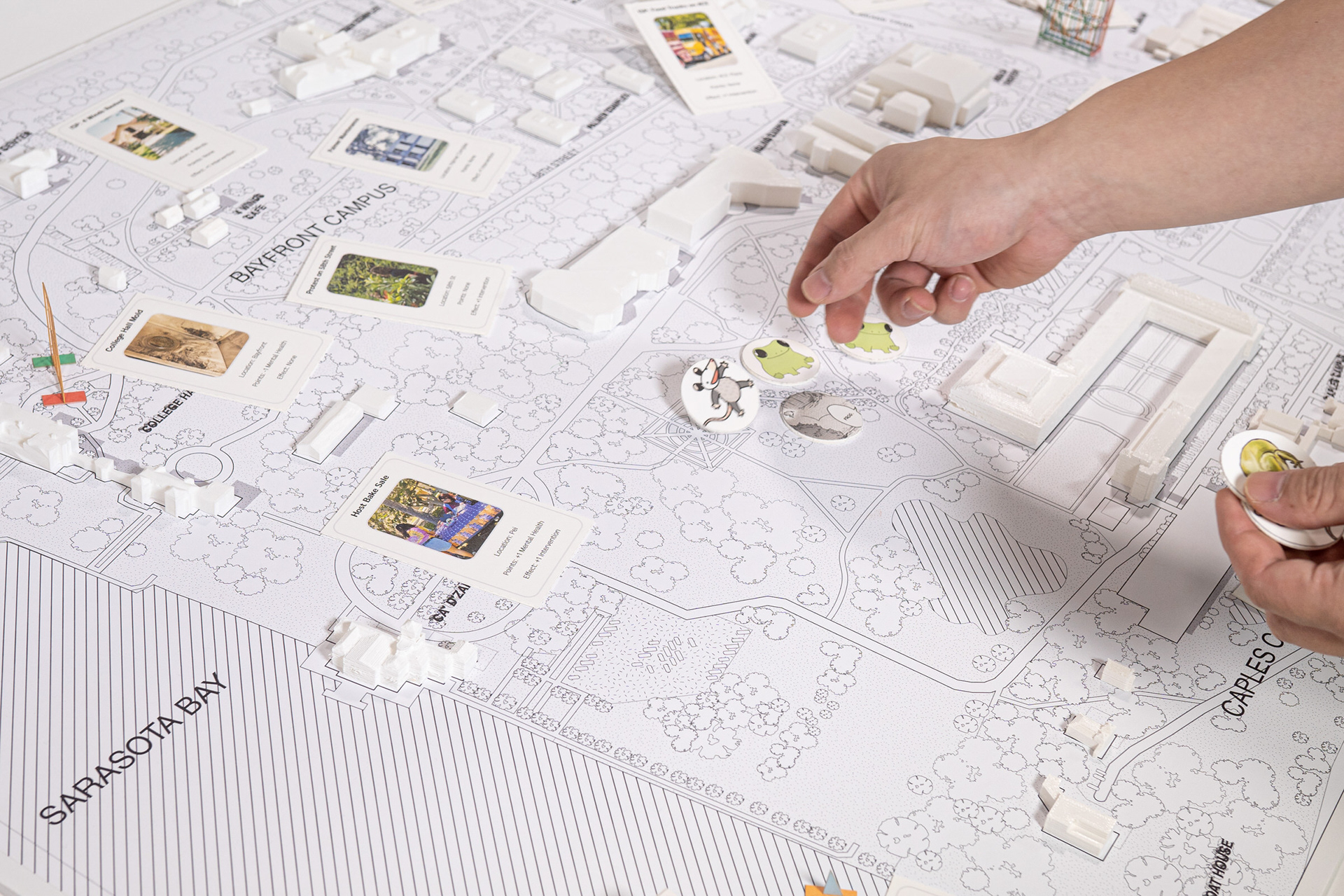
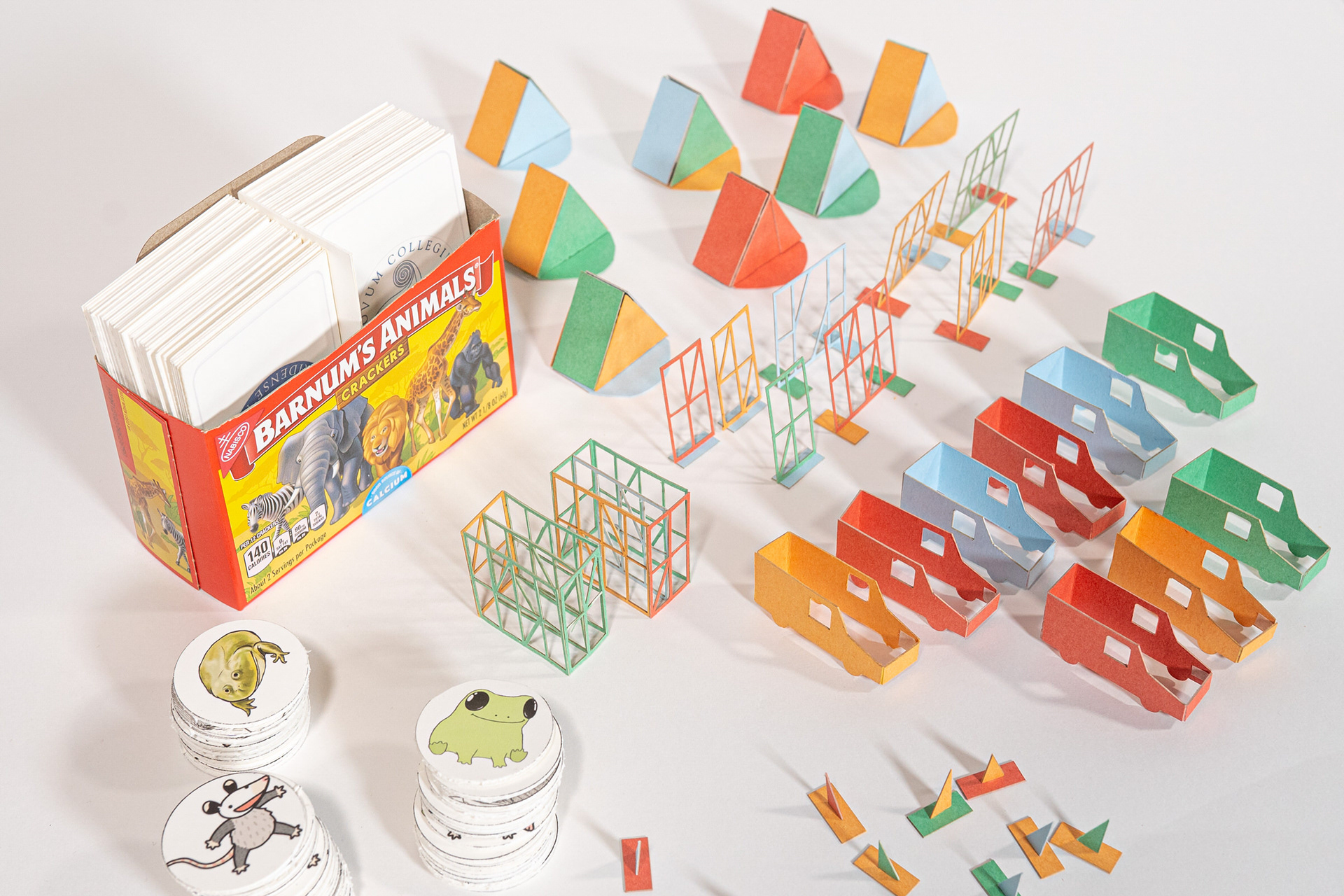

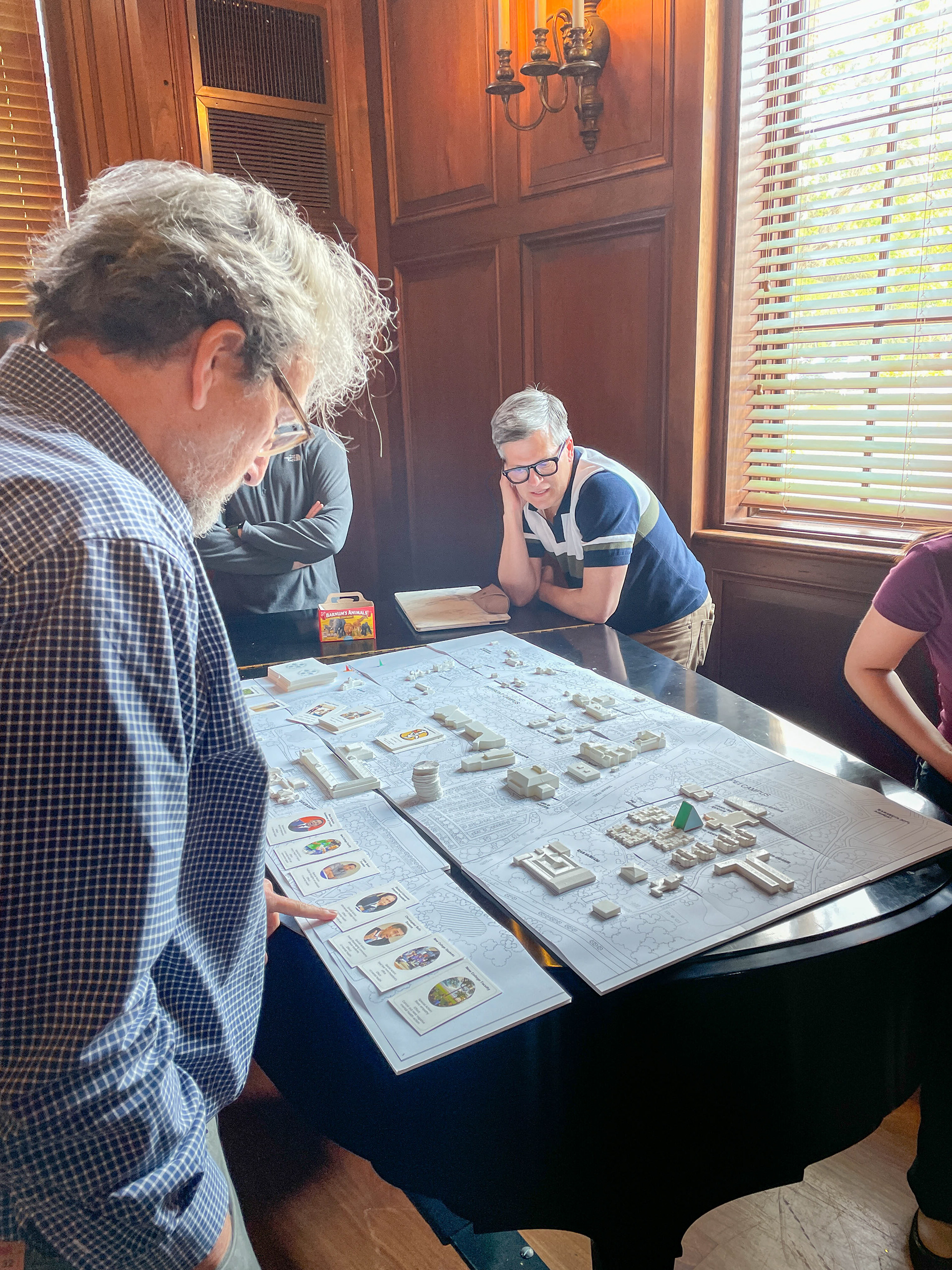

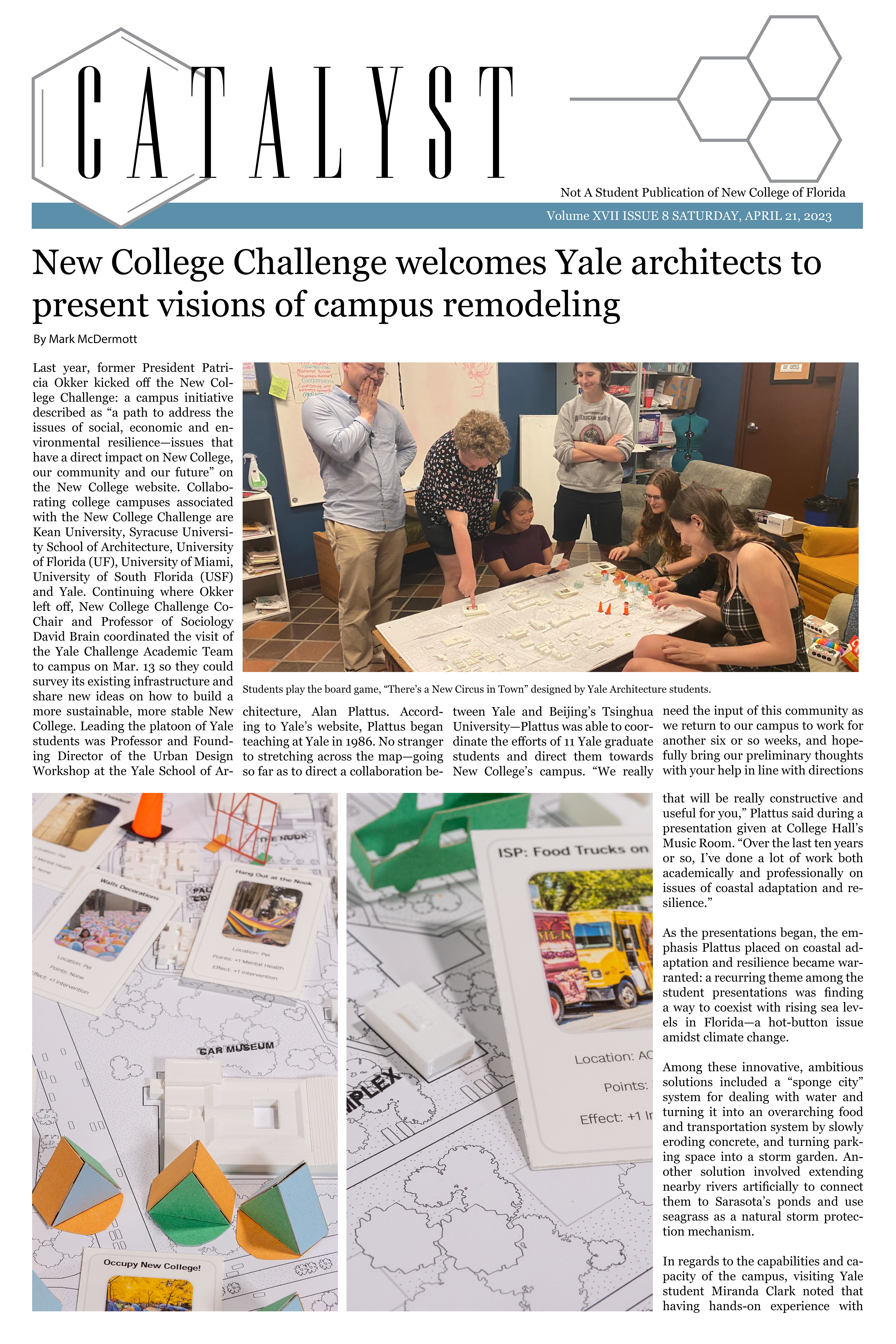
We brought the board game to New College for students, faculty, and administration to play, and through this engagement I learned that the campus has a history of student activism and agency over campus spaces.
Through mapping workshops and interviews with students, I also learned about the disconnect between the residential and academic sides of campus and the lack of opportunities for social engagement between students, faculty, and administration.
The college's student newspaper wrote an article about my group's work. And after seeing the board game, one of the college's students thanked me for "caring about our crazy little college."
Returning to Yale, my group decided to use the analogy of a hurricane, something all-too-familiar to Florida, to represent the current campus's political climate. By reframing politics as a natural disaster, we proposed ways that students and faculty could foster social resilience and engagement to rebuild the campus community.
We decided to portray these designs as newspaper articles to not only project possible futures, but also frame the events as something not isolated to just this campus, but as something relevant throughout the country.


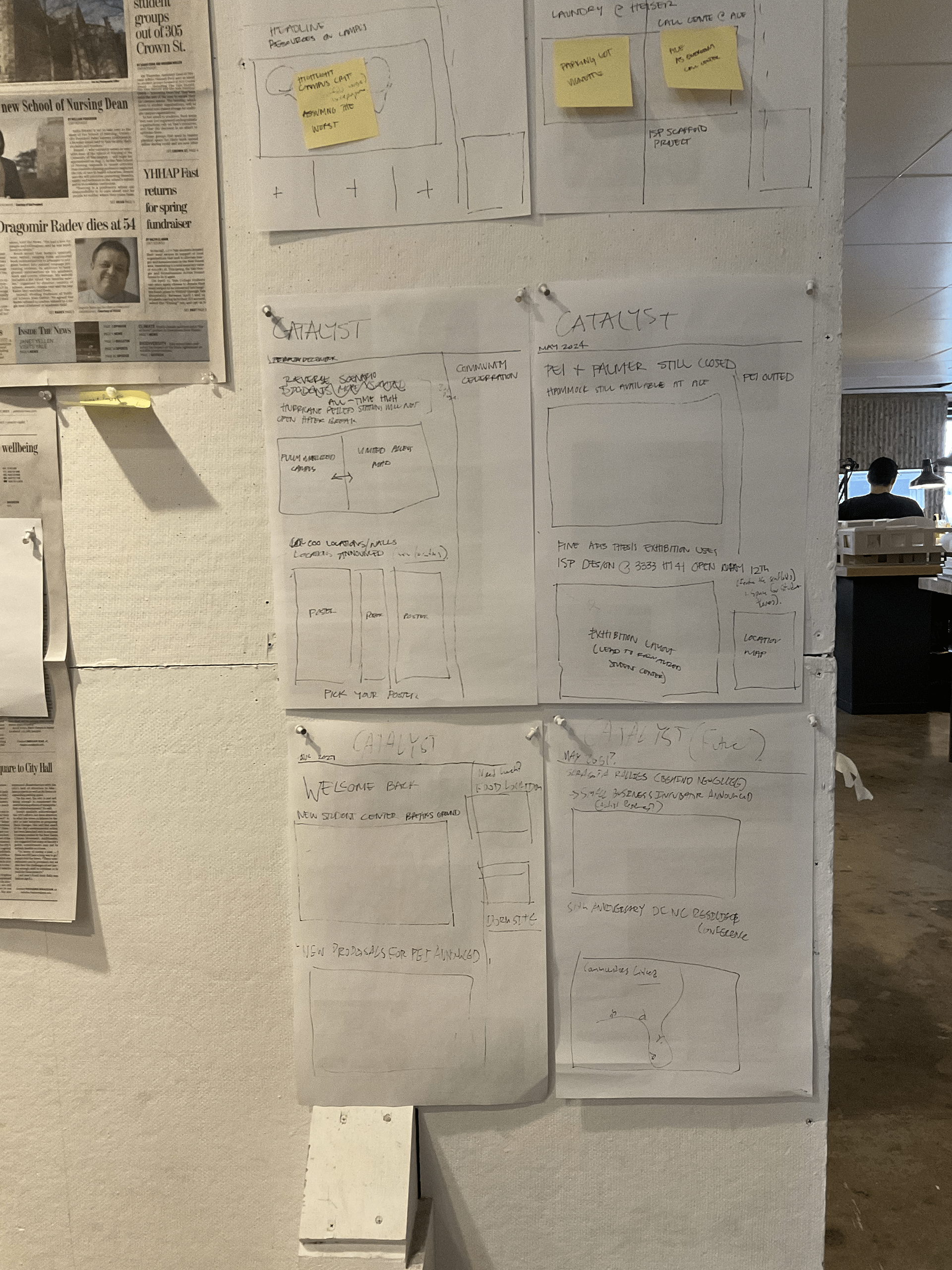
The New York Times piece introduces the severity of "Hurricane Richard," (named after Richard Corcoran) by using existing photos of hurricane damage and sea-level rise to indicate that these events are all-too-familiar and already in-occurrence. Possible solutions are hinted through the reference to Eric Klinenberg's studies on social resilience, and the map provides commentary on "worsening weather" by listing of instances of abortion protection repeals, mass shootings, and anti-LGBTQ legislation).
On the regional level (Sarasota Herald-Tribune) the context of the Sarasota community and New College is introduced. The aftermath of the storm on the local community is highlighted, and student initiatives are introduced as key avenues for relief efforts. Sponsor placement and advertisements hint at historic factors and key players that contribute to the environmental and political crisis (British Petroleum sponsorship, Brad Pitt's Katrina debacle, sales for water-logged cars, tourism).
Using the New College student newspaper as a medium, we reframed existing conditions (such as the presence of mold in buildings, degrading infrastructure, student disconnect, and lack of social cohesion) as products of the hurricane. This allowed us to subtly critique existing policies on deferred maintenance and campus planning that had contributed to these issues.
Highlighting student initiatives, we then transformed buildings and student spaces on campus to serve as aid/relief centers. The goal of this was to emphasize the active role that students should play in addressing the situation, featuring tactical-urbanism interventions like scaffold-cities and floating classrooms. The two-campus divide from the Tamiami Highway and resulting campus disconnect was both posed and solved through the representation of the collapsed overpass bridge and ferry-routes to navigate the flooded corridor.
While not shown here, additional publications tracked the transformation of these aid-spaces into community assets and the strengthening of social tied between students, faculty, administration, and the local community.
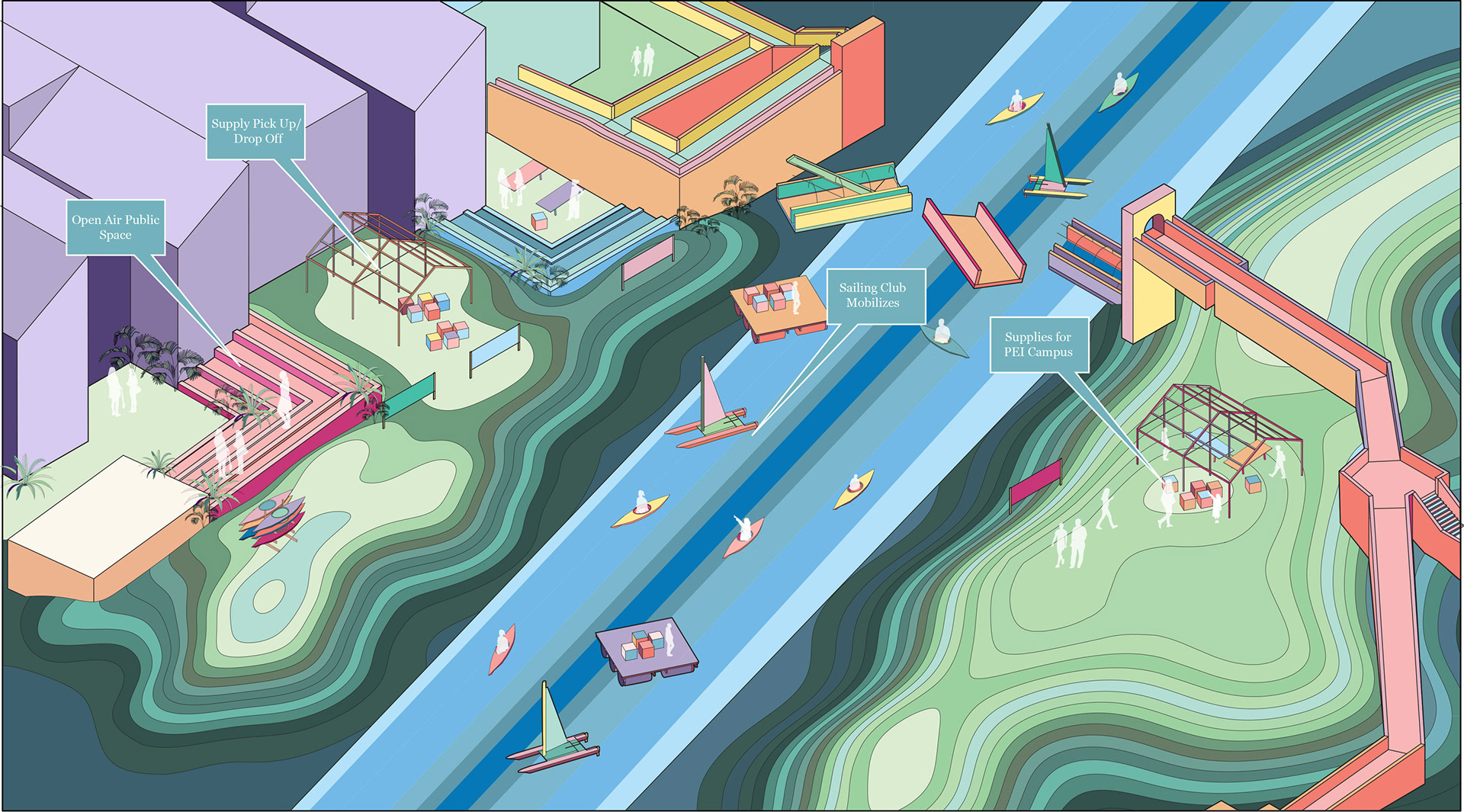


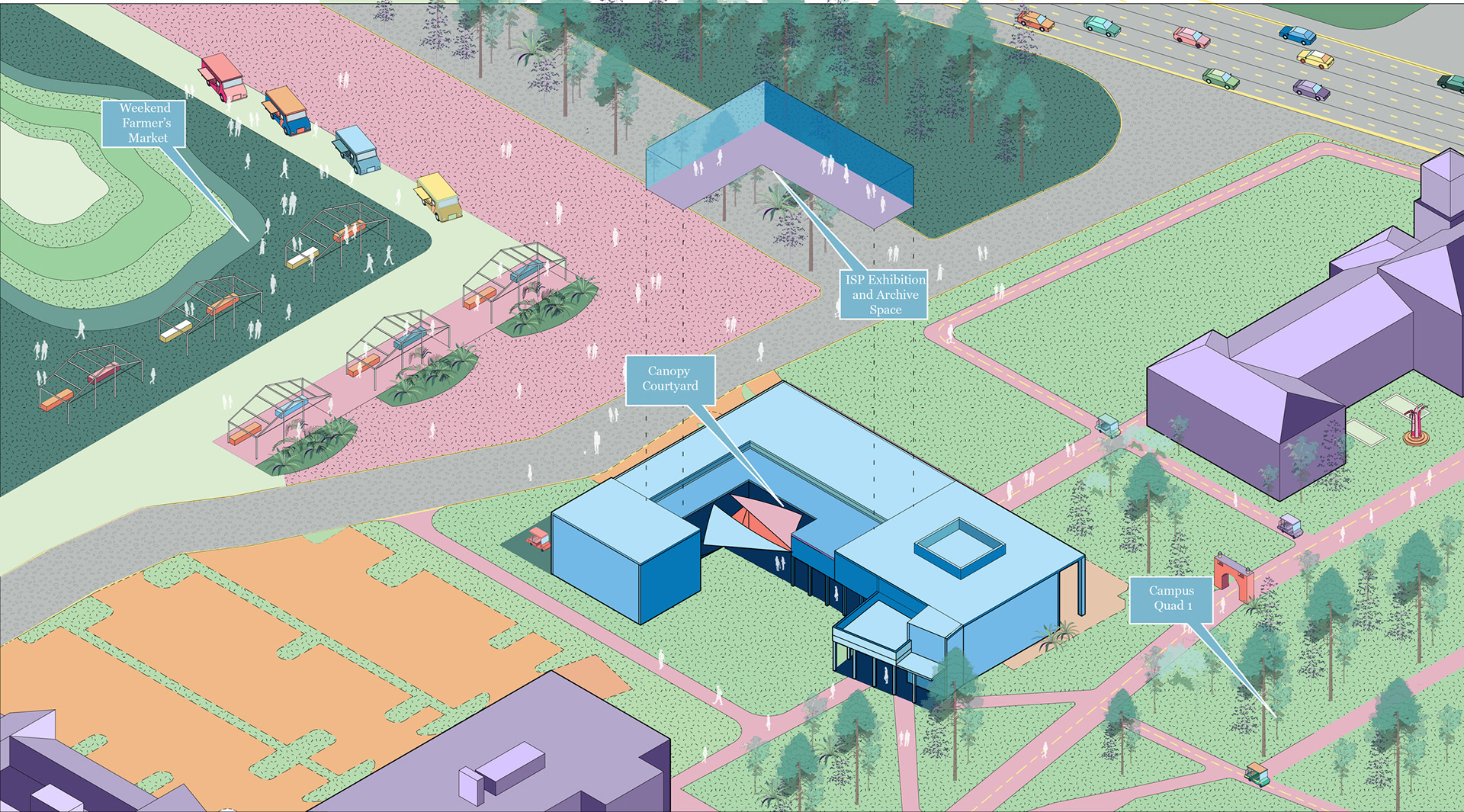


Despite our efforts, the impact of this project was still limited to that of a class project. While our professor presented our work to students, faculty, and administration at New College, ultimately the administration continued with their plans to overhaul the college and the collective student response never materialized.
I ran into one of the students that I spoke with on campus months later, at Hampshire College. They had transferred from New College after being expelled for spitting on trustee Chris Rufo's shoe. We reminisced about the memories and later they wrote an email expressing their thanks and how much our efforts meant to them.